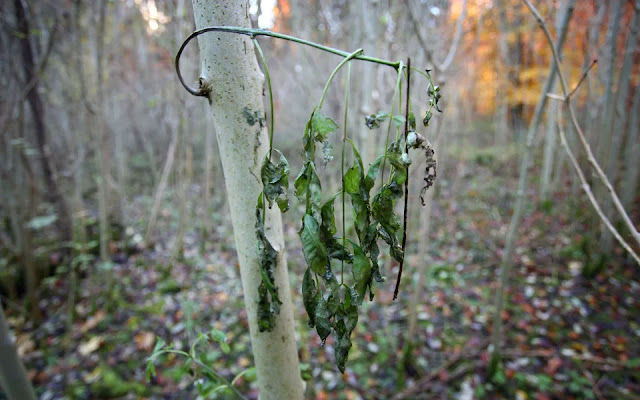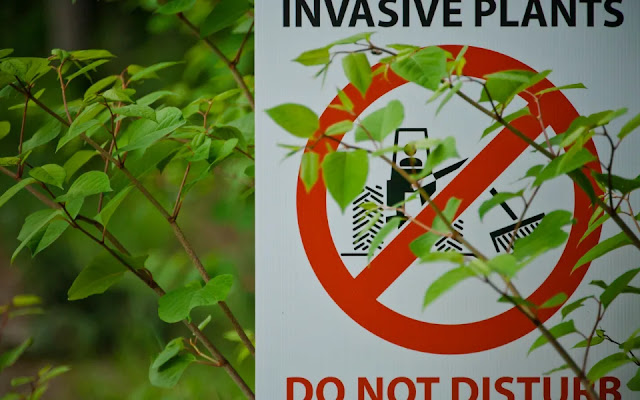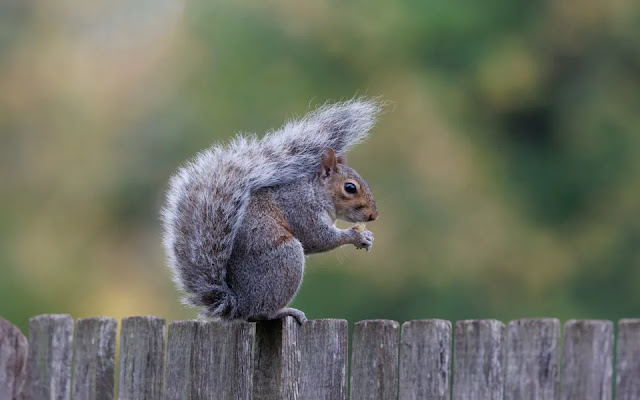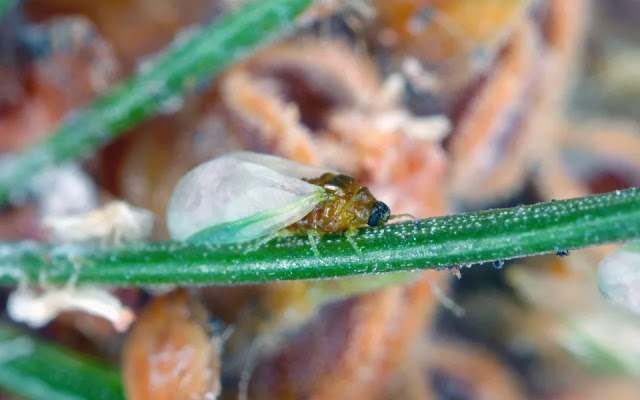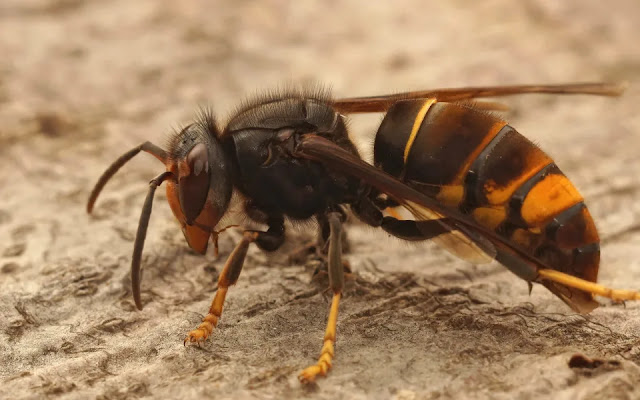Secret World Wildlife Rescue were sent out to a dying Fox in Portishead (Bristol BS20) this morning (16th August, 2023) . "Secret World Wildlife Rescue were sent out to a dying Fox this morning. The Fox was found to be breathing heavily and drooling in someone's front garden and it was taken straight to Vale Vets where it has been prepared to PTS. they had drawn up meds to euthanise and were injecting into heart, the draw back blood was cloudy, pale and creamy, rather than blood coloured. But the fox actually passed before they administered the drugs.
My response was "WE WANT THAT ONE!!"
So it was gasping for air (agonal breathing) which in humans is a sign of cardiac arrest and stroke although organ failure/organs shutting down also cause this. For some reason I had it in my head to look for discolouration of blood and I cannot remember why. The pathologist will sort this one out.
We have so far sen no evidence, following post mortems, of the claim that "adenovirus is endemic in British foxes" -in fact our pathologist is somewhat surprised that he has not found adenovirus. We have had five cases of babesia and so far four cases of leptospirosis so the Project is making inroads there and the final report (if I don't have a nervous breakdown compiling it) should stir up a lot of interest amongst anyone interested in foxes.
What concerns me is that if (as I suspect and I am postulating here since I never state anything for a fact until the post mortems are completed and we have hard evidence) the current two heavily jaundiced foxes and today’s discoloured blood fox submitted for post mortem examination turn out to be leptospirosis it would take the total number of cases to 7. We have lost, because this is a voluntary project and with no freezing or chill storage capability, a lot of dead or collapsed foxes whose described symptoms included sudden collapse and jaundice. In fact, if memory serves me around four such foxes were lost to the Project. These cannot be counted as anything but anecdotal evidence simply because we do not have the post mortems to back up such a conclusion just experience. But if (if) they were leptospirosis that would take the total to eleven (11). That would indicate from the Bristol sampling, that leptospirosis is far more common than adenovirus.
The following is an interesting abstract from a paper which, unfortunately not being a “professional” (fifty years a mammalogist / natural doesn’t count) I cannot access the full paper but here we go:
Acute lethal leptospirosis in a red fox (Vulpesvulpes)
Abstract
Doroteja Huber , Josipa Habuš , Nenad Turk , Krunoslav Vinicki , Ivan-Conrado Šoštarić-Zuckermann
https://pubmed.ncbi.nlm.nih.gov/36739678/
“Leptospirosis, caused by pathogenic spirochaetes belonging to the genus Leptospira, is a globally distributed zoonosis that can affect many species of domestic and wild animals, and humans. The red fox (Vulpes vulpes) is a native species in Croatia and, due to constant food availability and lack of interspecies competition, is becoming more abundant in urban and suburban areas.
“Although antibodies for Leptospira spp have been detected in red foxes, lethal disease has not been reported. We necropsied a young, male red fox that had jaundice, multifocal haemorrhages in the heart, lungs and urinary bladder, hepatomegaly, non-congestive splenomegaly and slight yellow discolouration of the renal cortex and medulla. Histology revealed multifocal haemorrhages in parenchymal organs, thrombi within lung septal capillaries and other blood vessels, interstitial lymphocytic and plasmacytic nephritis and erosions of the gastric mucosa.
“A microscopic agglutination test on the post-mortem cardiac blood clot revealed a high titre to Leptospira interrogans serovar Icterohaemorrhagiae, which implies contact with rats, which are natural reservoirs of this serovar in Croatia. The gross and histological findings in this fox were similar to those in dogs with leptospirosis, indicating that fatal leptospirosis can occur in foxes and suggesting that this species can act as a source of infection for other animals and humans.”
We know that Bristol is also a City with a huge rat population. We also know that rodenticides are not that effective and that the local authority (Bristol City Council) has not carried out any study on the effectiveness of rodenticides it uses -this is a standard thing most authorities are supposed to do. As soon as rodenticide was mentioned all of the cheery promises of cooperation from Bristol City Council vanished and there was a very obstructive attitude taken. In fact, we have submitted over 50 foxes for post mortem examination and only one died due to rodenticide and that was secondary poisoning having probably eaten a poisoned rat. Therefore, based on these cases the local authority attitude is puzzling as it does not show widespread rodenticide poisoning. Also, the local authority dismissed cooperating with the Project as “all fox deaths are car related” -which they are proven wrong on -though cars are one of the biggest killers of wildlife in the area -deer, otters, foxes, badgers, hedgehogs and so on.
Cats rarely tackle rats these days as other than feral cats they are too well fed. That written I do know local cats have taken a good few rats and mice over the years. Foxes are excellent at dealing with rats and I have first had experience of that from a few years ago. Two main prey items feature in the fox diet (no, not chickens) and those are rats and rabbits. We know foxes have killed wild rabbits in and around Bristol and we certainly know that foxes have taken rats. Despite the ill educated statements in 50 years I have never had evidence of foxes preying on hedgehogs and they certainly do not prey on pet cats -the latter is mainly pro hunt rhetoric. This is where we get a major problem.
I have spoken with many people who feed foxes on a supplementary basis so not over-feeding. In some cases this is to study local foxes or keep an eye on the health of the local fox population -in other countries studying jackals, coyotes et al and their health is standard but Vulpes vulpes is largely ignored. Again,in some cases food is used to provide mange treatment and it has to be remembered that in the 1994/1995 mange outbreak in Bristol (which I am still investigating for a very serious reason) during which the old fox watchers found themselves unable to do a great deal only approximately 6% of Bristol foxes survived so 94% of the population died off. Monitoring local fox health has therefore been a priority and luckily I know of fox watchers who have kept records of their local foxes for up to three decades and can even identify who the mother or father was of each generation.
The problem is that massive over-feeding is taking place. Not just massive over-feeding but foods which no wild animal let alone a canid should eat are put out. I have seen the photographs and video clips of huge amounts of chicken, sausages and other foods, both cooked and uncooked (cooked bones are a danger to foxes) , along with sandwiches, baked beans and even “last night’s left over pizzas” and other processed foods. In an economic crisis when families are struggling to buy food the basic items reduced in price for that reason such as chicken are grabbed daily by fox feeders. There are feeders who put out ‘breakfast’, ‘dinner’ and ‘supper’ for ‘their’ foxes and foxes and their cubs then learn to arrive outside the house ready for the feeding time. This is habituation of foxes and should really be a wildlife crime -as should enticing foxes (and badgers) into kitchens and homes with food. Someone shares a photograph of a fox in thei8r garden and there are a half dozen immediate comments such as “Oh, poor thing looks starving -feed it!” or “It is so thin -it needs food!” or even “Put food out – chicken - and they will keep visiting!”
All of this adds up to abuse of wildlife. My old dog, Sooty, was fed on scraps and once or twice a week a can of dog food. She would flatly refuse to eat food on one or two days because she was regulating her input and she lived to be 17 years of age. Every year there are funny posts on local groups where someone has been ready to repot a plant or dig around a shrubbery and “Weird. I found an egg in my pot” and in 2022 I counted 10 confused gardeners who found eggs in various parts of their garden. Some told that foxes bury extra food had it suddenly dawn on them that they did see foxes so that must have been what was “planting” eggs.
That may cause a few chuckles but here is the problem. Again and again I read people commenting that ‘their’ fox (a fox is a wild canid not a garden pet) took “5-6 chicken legs/wings and after a few minutes was back so it must have young!” And why “must” the fox have young? “It looks so thin so it is not eating the chicken!” People do nopt even know how to tell a dog fox from a vixen or that the taxonomic name is Vulpes vulpes and the number of requests for advice on “what to feed a fox” is a weekly thing. My advice these days is “Go and buy a book on foxes and learn about them” but it seems that is considered both unfriendly and negative advice!
A fox, like many other wild animals, will stash food away in case no new food becomes available and that is something built into foxes to survive. Rabbits is the top food item. There are historical accounts of foxes living on farms or within yards of easy picking chickens who avoid them and go out to hunt rabbits and we know when the rabbit population hit rock bottom in the 1950s foxes started starving and dying off. In Bristol and any other town I would always advise to never put pet rabbits in a run or any other type of easily entered enclosure; buy a “fox proof” cage/run -they are easily found online. Hawks, badgers, foxes etc see a bunny running about a garden it is a food source. The same applies to any poultry or fowl and it is no good blaming a fox when you have not even considered all the predators that might take your birds or purchased adequate housing/protection. It is bad animal husbandry.
A few people take delight in the fact that they have “wildlife in the garden” and these turn out to be rats and mice all given names of course. Advice is given to get rats moved on without resorting to poisons or inhumane traps and the responses are always the same; “No one asked for your opinion!” and even “I shall not do anything to deter rats and my garden is meant for wildlife” (the latter person was the only one who complained to the moderator of the Bristol Naturalist Society page and had it deleted despite it having positive feedback). It is interesting how a year later some of these people are desperate for non-lethal ways to get rats out of their gardens as “there are so many now” or “they are all over the garden”.
We do see rats getting caught by foxes but the problem is that when excess amounts of food are put out of course rats will grab it. Buried chick and eggs – yes, rats will have that as well. Bad fox feeders are causing a boom in rats populations and in some cases trying to prevent foxes getting at their natural prey. One person was very antagonistic over something I posted about foxes visiting their area taking care of rats “I would sooner have rats than foxes ‘leaving messages’ outside the house!”
Here is where I see how leptospirosis may be so rampant in Bristol foxes (and this would seem to be nationwide); over-feeding and the wrong foods. The reason so much food is buried is because it is too much for a fox to eat and, naturally, if you feed it even more food to stash it will keep coming back for more: it is not starving. If it looks thin it is because that is how a wild canid looks -slim and healthy and that keeps them on their paws for natural hunting of prey.
It cannot be over-stressed just how bad over-feeding of foxes or any wildlife is. In some countries it is considered a wildlife crime to feed animals like foxes. It disrupts the natural prey-predator balance that keeps our eco system itself in balance.
We have seen with dead foxes how, very quickly, even in a city a rat will move in to have a gnaw or corvids (crows, ravens, jackdaws, magpies) will descend to peck at the corpse. That is the way nature works. If a rescuer called out to a deer hit by a car finds it dead then they move the carcass off of the road and under hedges or grass verges because there is nothing else that can be done and it will provide a meal for a lot of wildlife from foxes, badgers, hawks and buzzards, etc. It’s other fate ois for the local authority to pick it up (IF they do that) and incinerate it. In the UK we do not examine all wildlife whether road-kill or not like some countries do so letting nature take its course will help other animals survive.
Really, we need to educate the public and foxes feeders especially on not to overfeed foxes (and badgers) and when it might be acceptable to feed supplementary food. I know that to many who are basically addicted to social media “Likes” denying them the ‘right’ to fill social media with videos and photos of foxes and badgers (and rats and mice) gorging themselves on huge plates of food is seen as something that they need to whip up the support of their ‘fans’ over I have faced that backlash more than a few times. I have been called “anti- fox” and many other things. I have seen the response “I will NEVER stop feeding my foxies!” so many times and even when you try to explain things simply there can be a backlash. Even explaining that a certain food should not be given to foxes has resulted in: “I feed that to my dog are you accusing me of animal cruelty?!”
The big problem arises when you read “I’ve fed the foxes here twice a day for five years now I am moving (new home, job or abroad) what can I do?” The basic response which is somewhat moronic from people is “Get your neighbours to continue feeding them!” or “Explain to the neighbours that the foxes need to be fed regularly!” If you call out to a neighbour that your grass needs cutting so they should get to work on it I wonder what the reply might be? The feeder created the problem so they have to sort it out. Less feeding over time until the move. Whatever but it is not for neighbours to take over their “garden pets”. And the people luring foxes and badgers into homes should face prosecution over a wildlife crime. That fox or badger may walk into a neighbours kitchen or home expecting to get food and they become (if the person is terrified of either or anti fox) “problem animals” and then the pest controllers are called in. Dead foxes (whether the one in question or not).
We (bad fox feeders) are causing a generation to generation dependence in foxes to human feeding. That in itself is horrific. It may well be that the over feeding of foxes is partly the cause for the drop in national population. Cars, pneumonia, babesia, lung and heart worm and more natural cause are killing foxes in numbers and the last thing we need is deaths caused by human feeding and if the number of leptospirosis cases can be tied to excess food sources it may be that even urban foxes will be decreasing in large numbers...I would hate to see another extinction of the fox population (read The Red Paper 2022 Volume 1: Canids if you need the history).
Incidentally, our Fox Deaths Register has a reporting system that has improved since 2022 (but not a lot comes via wildlife groups) andas of today the number of reported fox deaths in Bristol is at 177 and if we consider that lactating dead vixens resulted in hungry young cubs dying then based on the lowest number of cubs that can be born we have exceeded well beyond 200 fox deaths in 2023 and it is only August.
As we are unfunded the Bristol Fox Deaths Project is due to end at the end of August, 2023. That will give us a two year sampling of dead foxes from start of Project to end. The pathologist has exceeded all of our expectations and Bristoil University Post Mortem Services as well as Animal Plant Health Agency and Natural England (though funding for tests has been tight) have all been very cooperative and, of course, get a picture of what is going on in the fox population. Zoe Webber, who I dragged into this, and in the last year Sarah Mills have had the task of collecting sick or dead foxes, rushing to veterinary surgeries and then transporting dead foxes to the study centre all on a voluntary basis. Before anyone asks neither are reimbursed for time or (importantly) the amount of fuel used in driving around and they have a rather unpleasant task. I simply sit around and coordinate (unfunded .







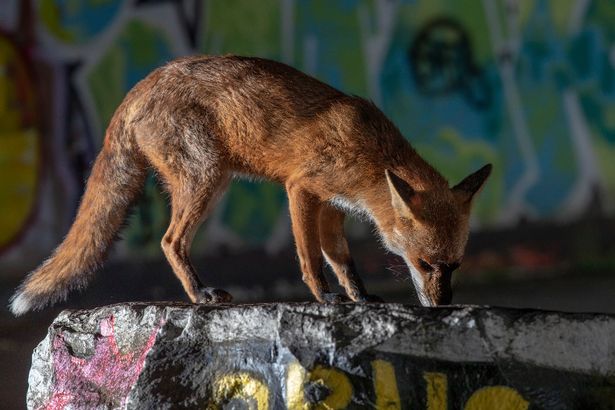

.jpg)
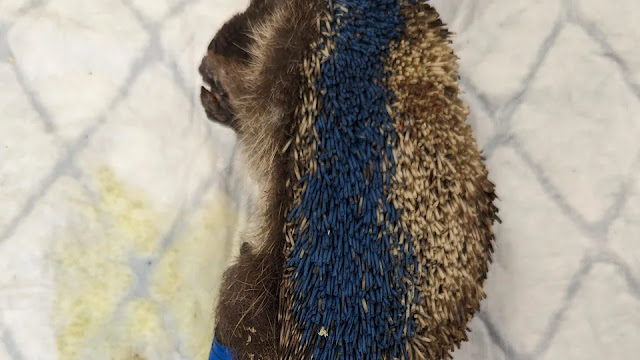

.jpg)



.webp)
